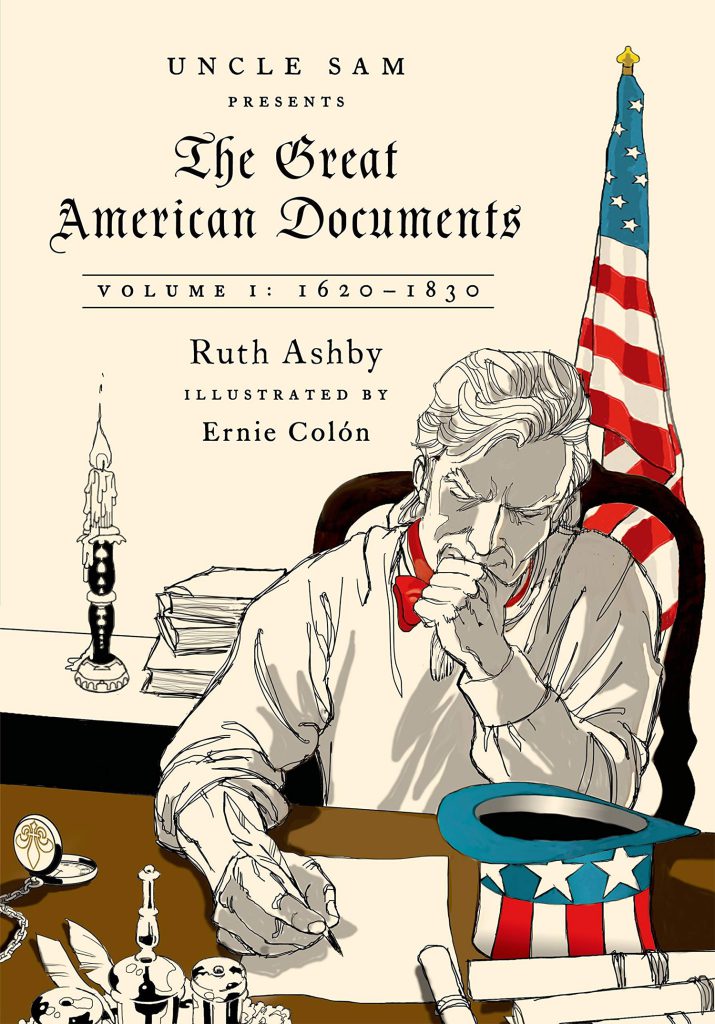
Now I had my creative team, artist Ernie Colón and author Ruth Ashby, under contract. But before we even got started on the project, our publisher, Thomas LeBien, told me he was leaving Hill & Wang and going to Simon & Schuster. Without getting too deep into the details, the book went through a series of hands at H&W, none of which had prior experience with graphic continuities.
No one there saw this as much of a liability, because, after all, a graphic novel is still a book. Well . . . yes it is; but no, not really. English and American contain many of the same words, but they are not the same language. Graphic novels are in book format, but they are visual continuity storytelling, which print books are not.
But I digress.
The challenge for us on Great American Documents was that we needed specific information included in each document story, but we also needed to fit 20 stories into a 160-page volume. For the most part, I think we met this challenge well. Some pages are denser than others; some have more text than I would have liked. But the canny type design and beautiful artwork keep the stories from looking cluttered and keep the narrative moving. The pages are richly layered, with Sam’s narration interspersed with characters engaging in conversation and sometimes in heated disagreements.
Collectively, the 20 stories weave together important parts of the rich tapestry that is our history and our heritage. It begins with “The Mayflower Compact,” which answers such questions as: Who were the Pilgrims and the other passengers on the Mayflower? Why did they come here? Why is their Compact important? How did it contribute to the birth of democracy?
Uncle Sam takes you on a guided tour through the founding of the colonies and the growing colonial resentment toward the British crown; the abuses of the crown; the call for self-governance; the coming together of American’s finest minds in a time of extreme crisis; our break from England.
He explores the meaning and impact of Thomas Paine’s “Common Sense” and “The Crisis.” He dives into the Declaration of Independence; the Constitution; the Federalist Papers; and the Bill of Rights. We treat these as “living documents” in America, and bringing them to life on these pages was a challenge well met. It is important that we understand and learn from history. It explains so much of what is going on right now. An informed public can make informed decisions about its present and its future. Discover the “what” and “why” of America’s great triumphs and failures.
Buy this book.